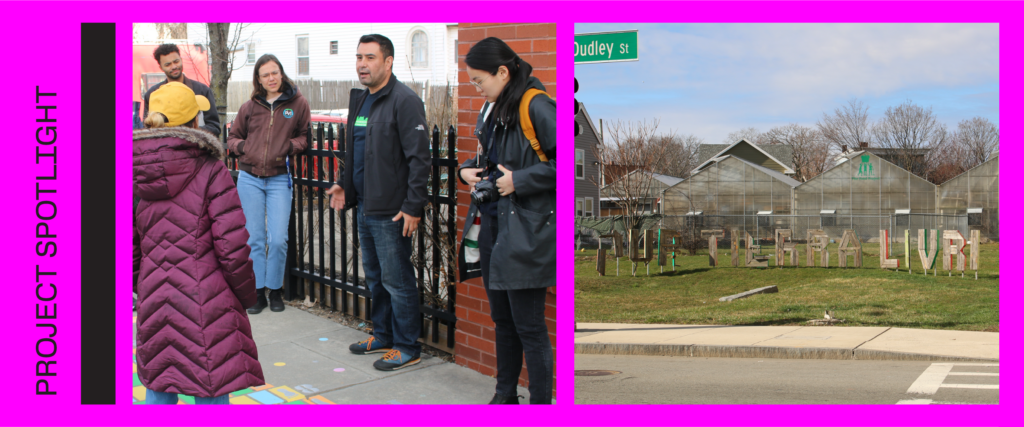Project Spotlight: UPD Site Visits

“We strongly believed that a deeper level of engagement with community-based organizations could provide us with more comprehensive insights. We knew it would enrich our coursework by connecting theory with real-world implementation.”
– Abdul-Razak Zachariah MUP ’23
Abdul-Razak Zachariah MUP ’23 and Lamei Zhang MUP ’23 met during their first year at the GSD in core studio. The two hit it off immediately, bonding over their similar backgrounds working with nonprofits and a shared desire to fight systemic inequities through design. As their academic studies presented contemporary and historical design challenges around the world, they saw an opportunity to bring their learning in the classroom to the communities closest to them.
Abdul: “So many of the GSD studios take place across the country or overseas. In contrast, there were barely any opportunities to work with the communities closest to us. It felt like there was a gap in the curriculum.”
Abdul and Lamei began the process of planning their student-led field trips, the Urban Planning Design (UPD) Site Visits. They chose a number of local neighborhoods in the Greater Boston area, including places like Chelsea, Dorchester, Chinatown, and Roxbury. They understood that many people in their cohort were not familiar with issues of systematic racial inequity, so they took it upon themselves to increase awareness and knowledge among their peers through these site visits, helping inform their future roles as planners and designers.
Lamei: “We found it crucial to explore the connection between communities of color, young people of color, and urban planning. We wanted to find ways to better ensure that urban planners and designers understood the voices and experiences of these communities in their training and future professional practice.”

While planning their site visits, Abdul and Lamei had the idea of reaching out to local organizations, including the Asian Community Development Corporation, the Dudley Street Neighborhood Initiative, DREAM Collaborative, and GreenRoots, among others. They were thrilled by the idea of learning directly from community partners that were already implementing the concepts they were studying in their coursework—community land trusts, housing development models, and the integration of climate considerations into city planning.
Their fieldwork spanned the greater Boston area and prioritized small group visits, during which they explored organizations’ offices and projects and discussed their processes and challenges. Many discussions emphasized the significance of history, planning, and design. Abdul and Lamei aimed to convey to their peers that they could actively contribute to creating positive change as planners and designers regardless of their background in and familiarity with these fields. This included time spent in debriefing sessions that provided students time to do valuable internal work through reciprocal sharing and reflection.
Lamei: “We wanted to thoughtfully engage with community organizations to learn about the historical context that played a role in shaping current neighborhood situations. Understanding the unique characteristics and significance of each neighborhood became a cornerstone of our work.”
After receiving a grant from the Racial Equity and Anti-Racism (REA) Fund, Abdul and Lamei were able to compensate the organizations that they worked with during each site visit, as well as help cover transportation costs and funding for debrief sessions—ensuring that the visits were accessible to students interested in attending.
Additionally, the funding has allowed the program to be available for future UPD students. This past year, the Harvard Urban Planning Organization, a student-run group, provided additional financial support for the program, and during the spring of 2023, the Department of Urban Planning and Design explored adopting the UPD Site Visits as a department-supported initiative.
Abdul: “We can’t stress enough how important ongoing student advocacy is to ensuring that these initiatives not only come to fruition, but also thrive. With the Master in Urban Planning program being two years long, maintaining continuity becomes a real concern. We truly believe that our efforts can spark and have sparked transformative change, and we’re hopeful to attract more alumni and donors who share our vision.”
The REA Fund provides grants for select student and faculty projects that analyze the historical complicity of design in constructing systems of inequality. This funding is made possible, in part, through annual giving.
Learn more about annual giving and its impact at the GSD here.
